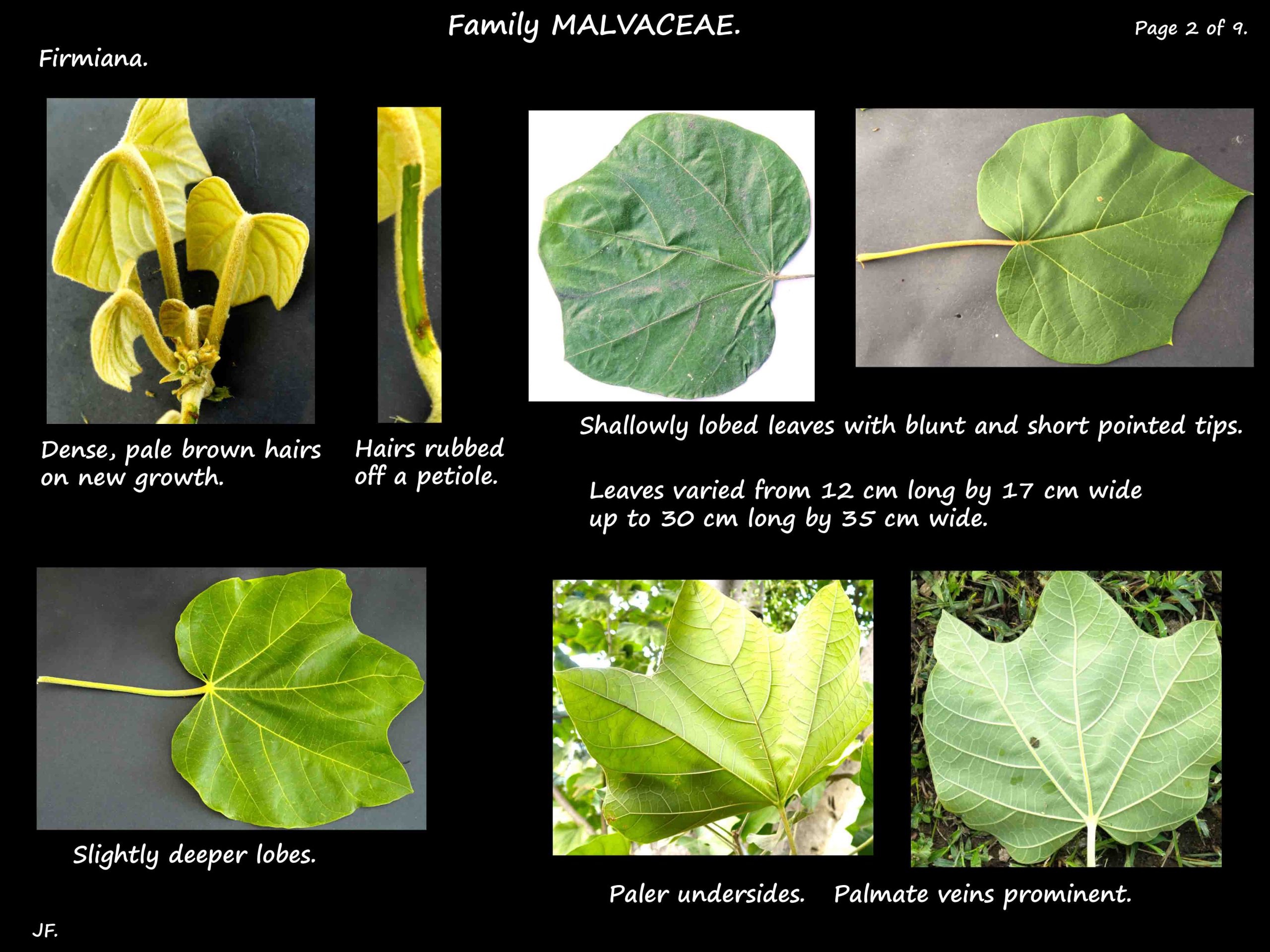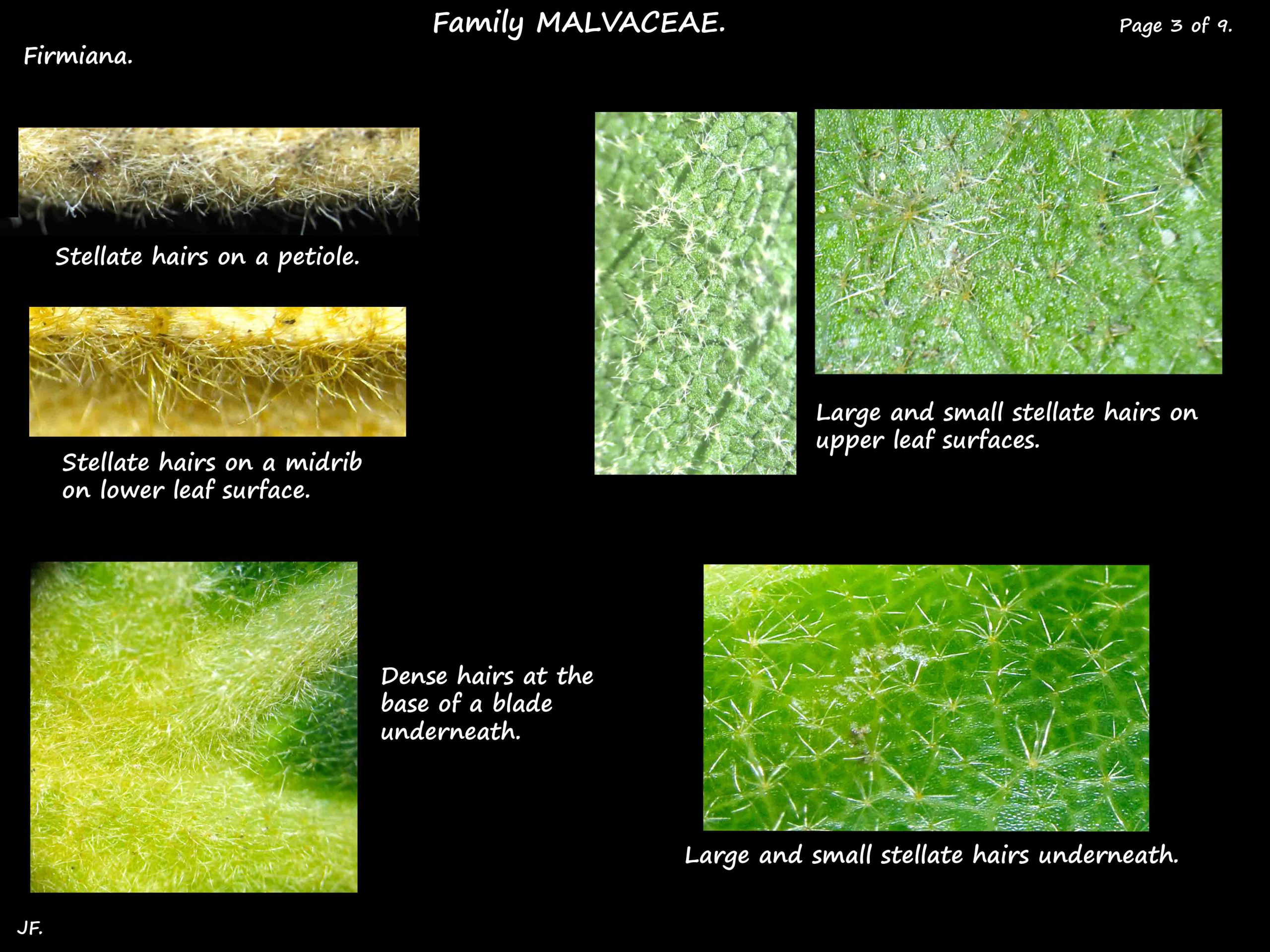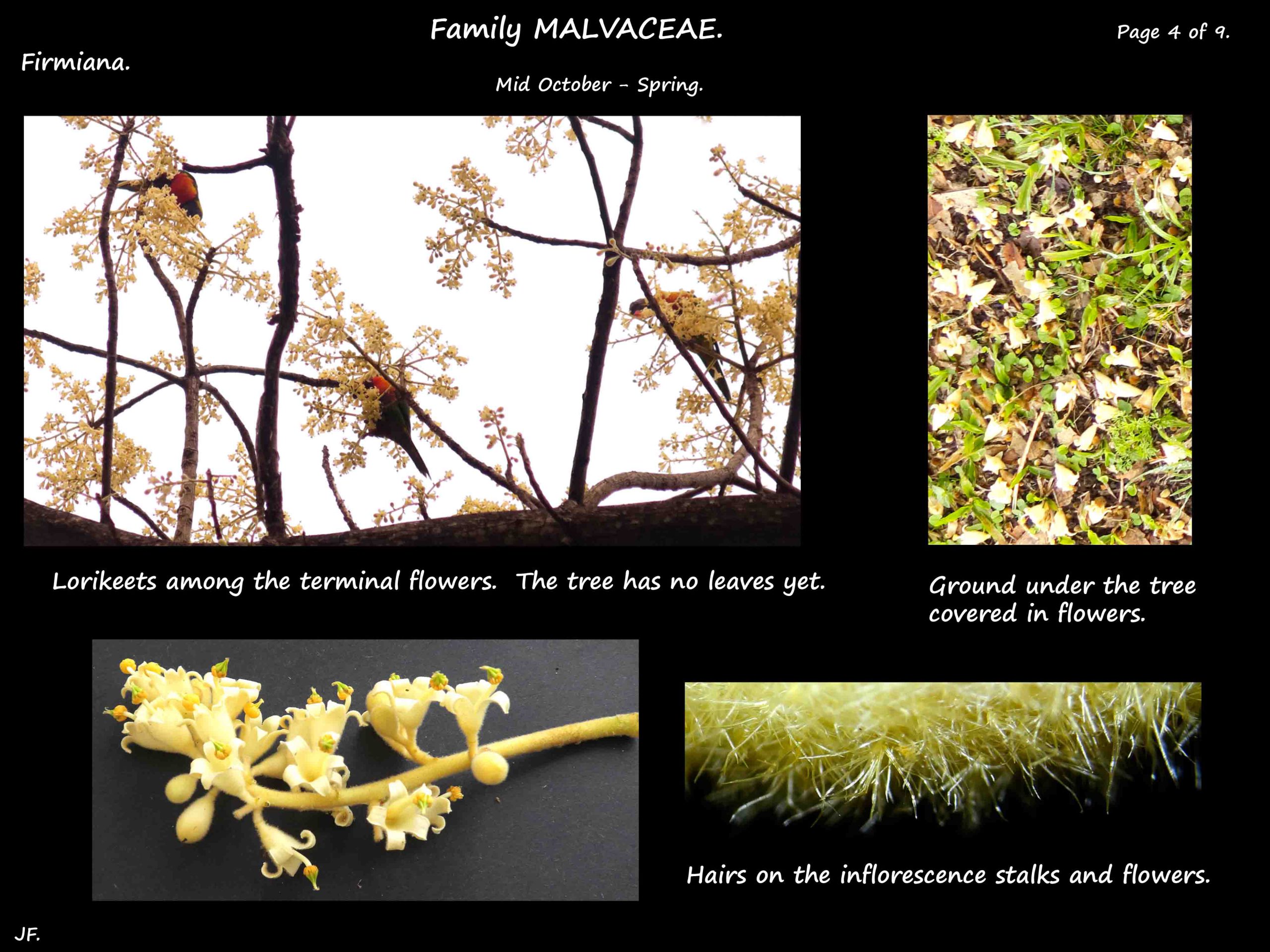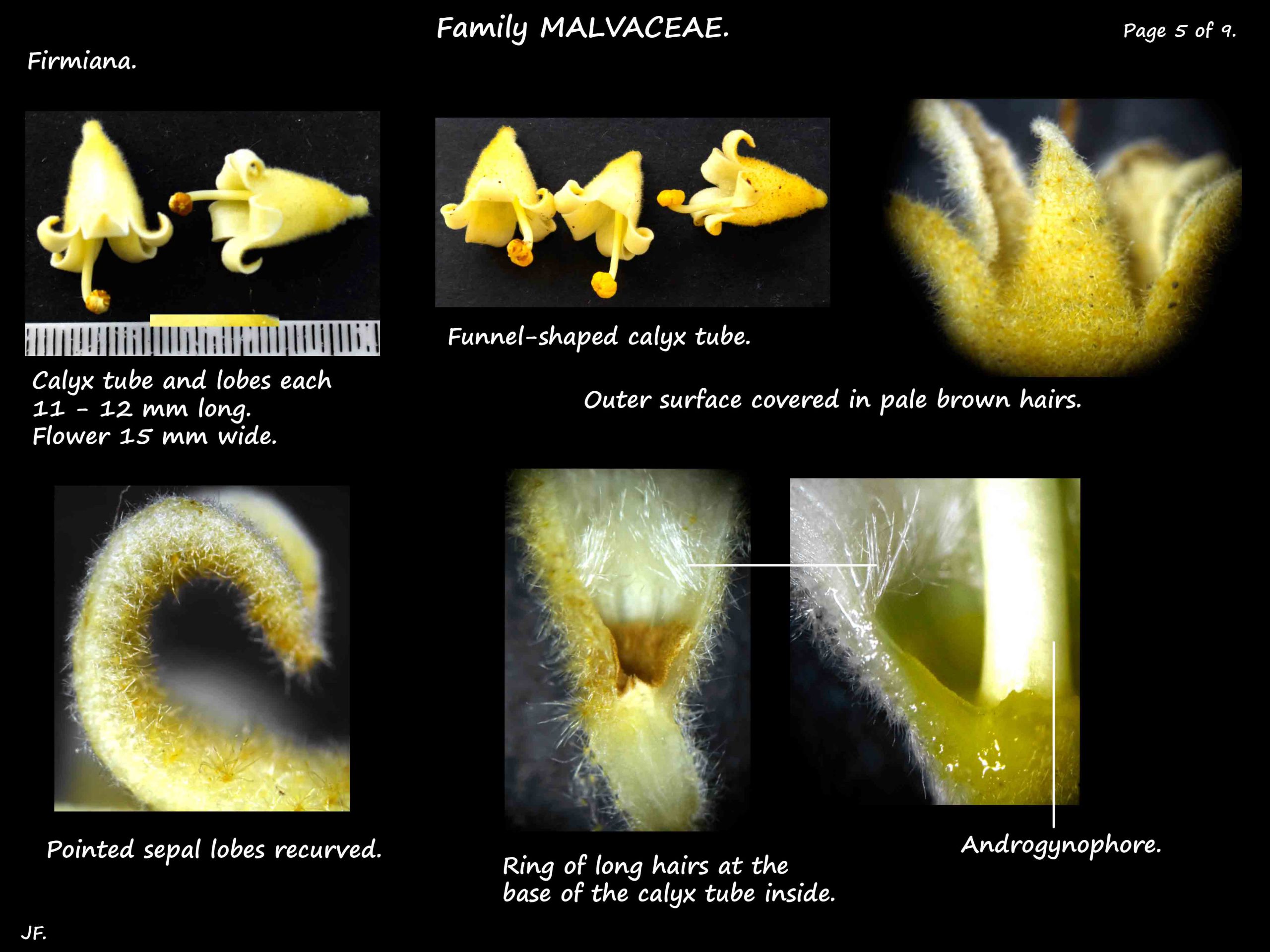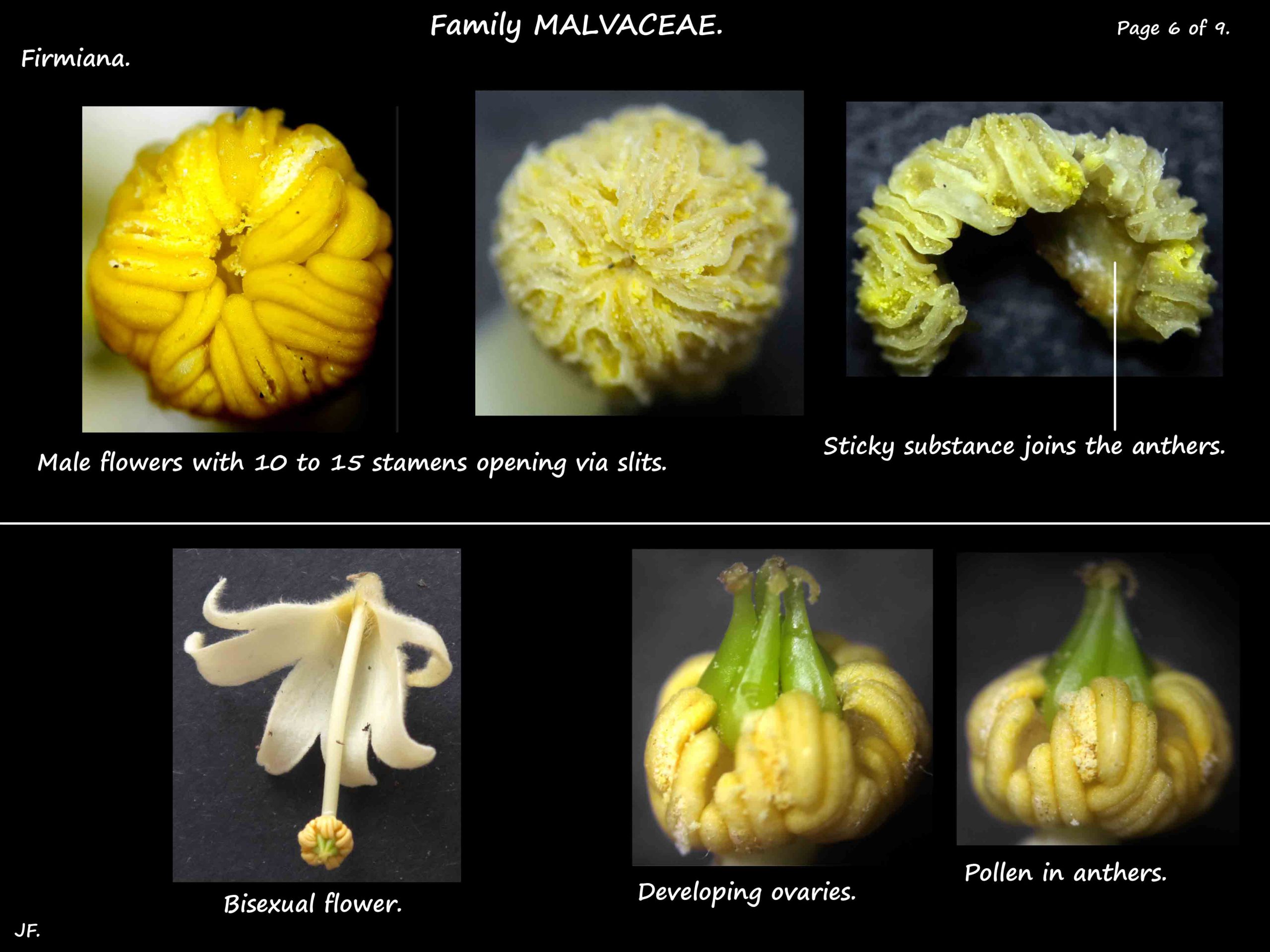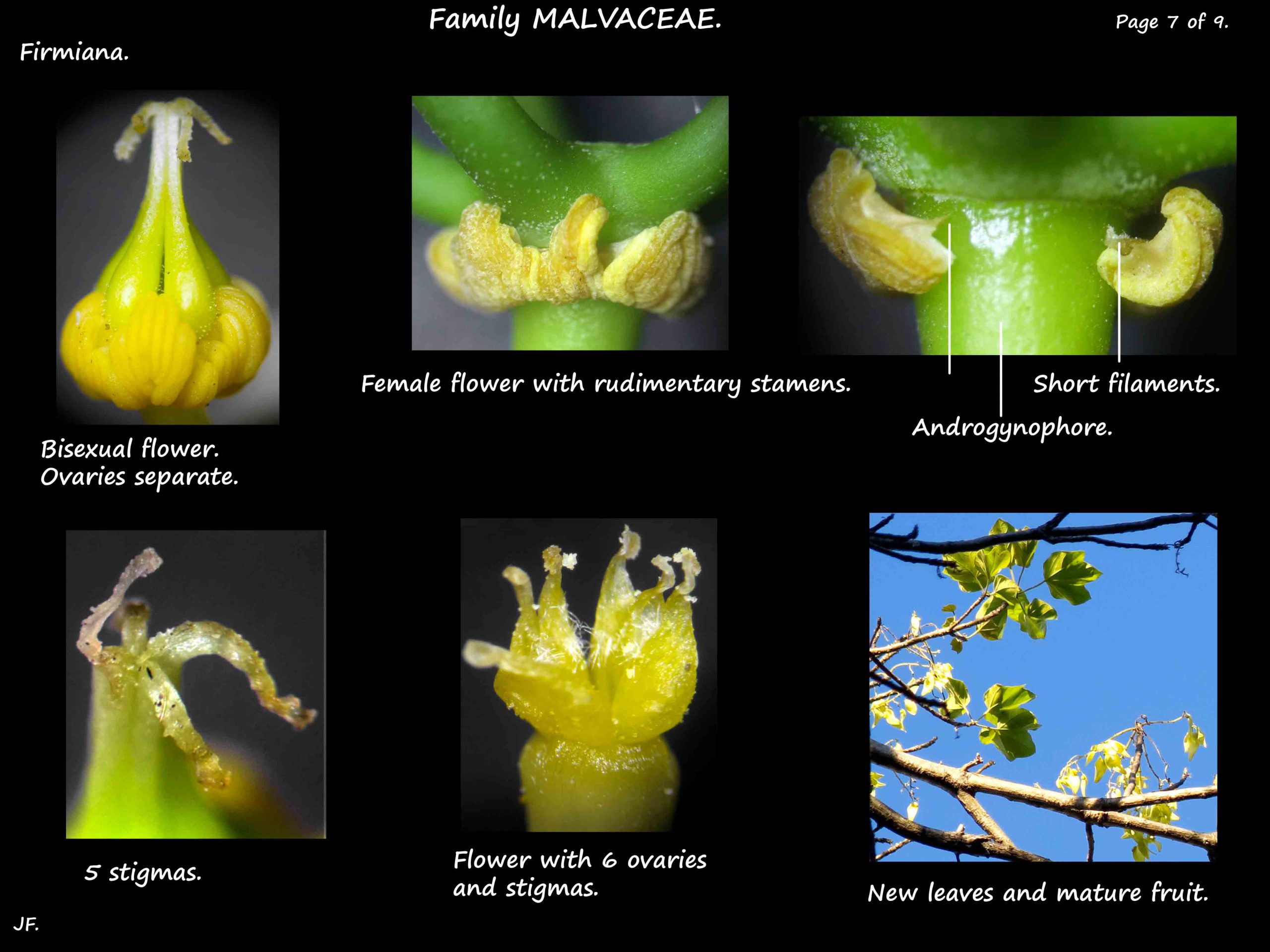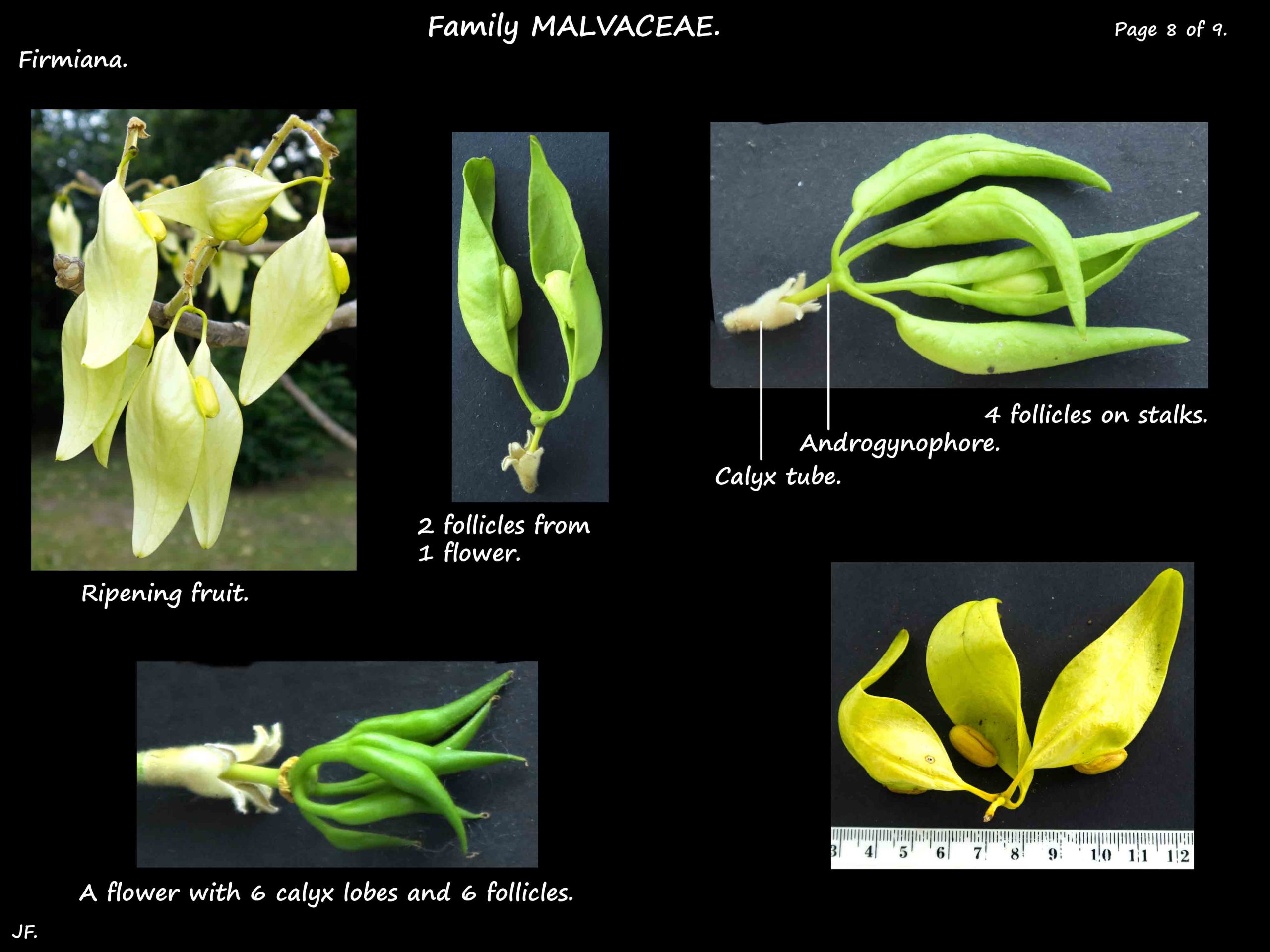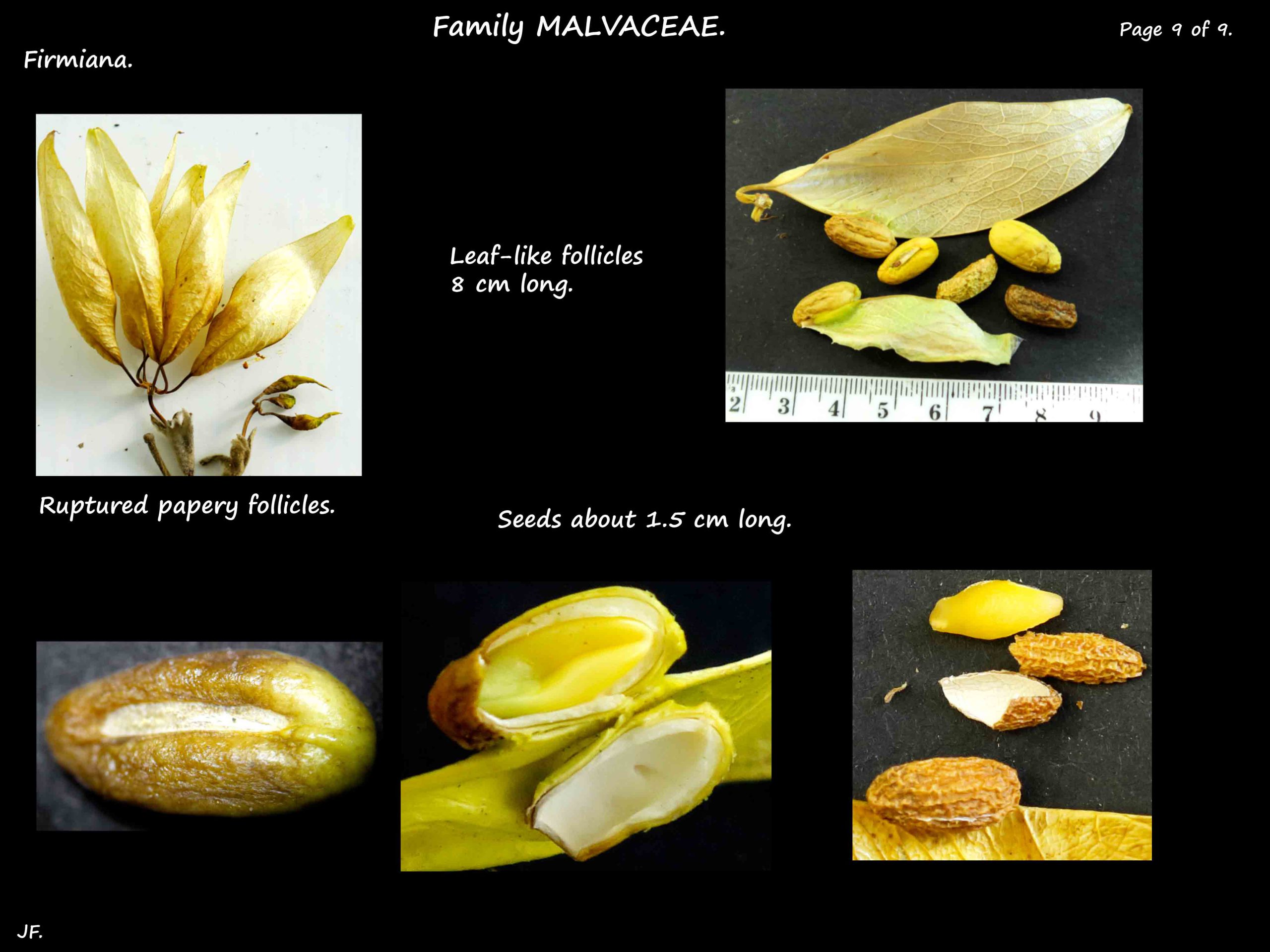Firmiana simplex.
It was previously known as Sterculia simplex.
The Chinese Parasol Tree is used as an ornamental tree.
Its name comes from the shade provided by the large leaves.
They are large, dense then deciduous trees up to 16 or 20 m high with a rounded crown.
There can be one or many trunks with smooth, greenish bark on the trunk and branches.
The bark has pale, vertical stripes.
The simple leaves, on petioles, are alternate and often crowded at the branch ends.
The ovate to cordate leaves are up to 20 or 30 cm long and wide.
They are palmately lobed with 3 to 5 lobes.
The upper surface is green, the underside paler and they turn yellow before they fall.
There are a few or no hairs on the upper surface but dense, small stellate hairs below.
The terminal inflorescences appear in early summer when there are no leaves on the tree.
They are large, upright, branched clusters up to 30 cm long.
The unisexual flowers, without petals, are cream, white or yellowish-green.
They are about 2 cm across.
The 5 sepals are joined at the base with long, outward curving lobes.
There is an adrogynophore.
Male flowers have 10 to 15 stamens and a rudimentary ovary.
Female flowers have an ovary with 5 locules and rudimentary anthers.
After fertilisation the androgynophore elongates.
It holds up to 5 (6) developing, green leaf-like follicles, on stalks.
The folllicles split down one side to release the 1 to 3 green seeds.
J.F.

